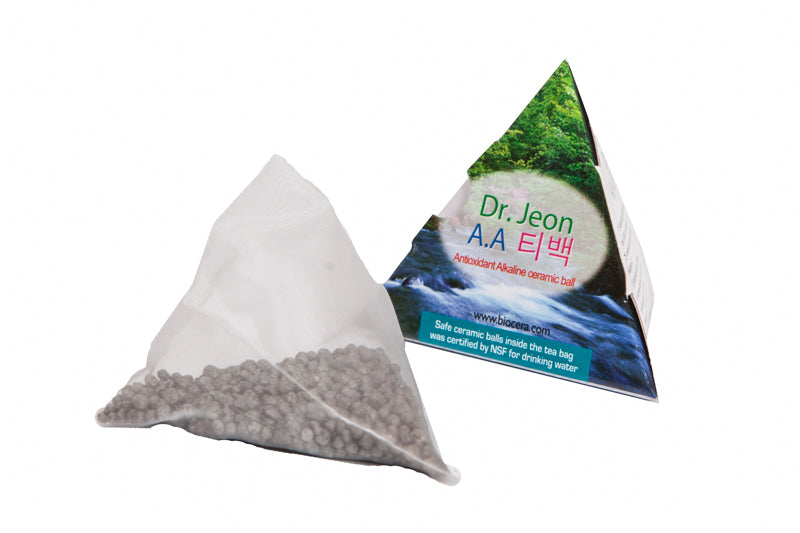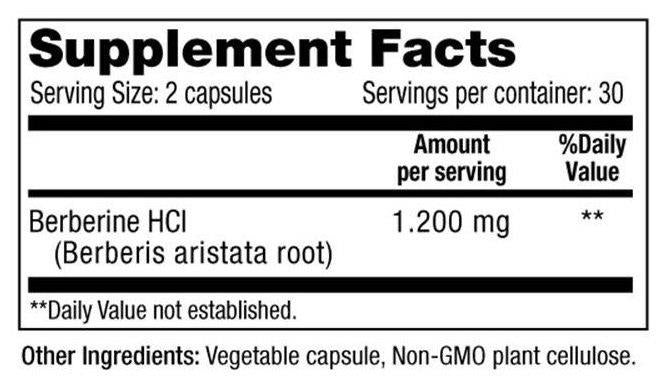All humic substances (soils, clays and shale) contain minute quantities of fulvic acids which are a particular type of humic acid. Fulvic acid molecules contain more oxygen than other humic acids. Fulvic acids are especially important because of their ability to interact with silica, chelate metal ions and form reactions with various other organic or inorganic compounds.
Fulvic acids can be found in clay, soils, humic shale, streams, oceans and lakes. The greatest concentrations appear in rare fulvic prehistoric plant deposits. These deposits are located near coastal areas with variations in chemical composition depending on location, climate, etc.
The yellow-brown color of liquefied humus in lakes, rivers, and coastal waters is almost entirely due to the presence of naturally-occurring, low-molecular weight fulvic acid chelates. These consist of various particle sizes, so small they are difficult to measure accurately. Substantial amounts of calcium, magnesium, potassium, etc., are brought into solution by the action of fulvic acid on mica, clay, and other mineral-rich deposits.
Recent scientific research in biochemistry, botany and agriculture has changed our understanding of how soil chemistry works and why fulvic acids are so important. For example, it was once thought that the chelation of metallic minerals into chelated minerals was accomplished entirely by the plant's interior biological processes. We know now that fulvic acids (which are strong chelators of metallic minerals) are partly responsible for micronizing metallic minerals prior to absorption by plants and micro-organisms.
This first photo gives an excellent view of deposit’s proximity to the earth’s surface. After being pushed to the surface by moving glaciers, the source material remained just a few feet below the surface for millions of years, until it was discovered by American Indians who used the humic ore as medicine for healing purposes, stopping blood loss by packing the wound with the ore, consumming the ore for its nutrient value. Slaves rediscovered the material while working on the land for their owners. Much like the Indians before them, they used the humic material to heal wounds and disease. Science is now validating many of the benefits originally associated with the humic source material.

Since fulvic acid is also an electrolyte, it increases the permeability of cell membranes, enhances RNA and DNA metabolism, reverses damage done by toxic substances, and prolongs the resident-time of nutrients within the medium. Fulvic acid makes trace elements biologically active for use by humans, animals, plants and microbes. It also acts as a transporter molecule for vitamins, enzymes and a host of other nutrients.
During the earth's prehistoric era, the topsoil was incredibly rich with trace elements, humic and fulvic acids. This caused plants to take up high concentrations of minerals. Fulvic acids play a significant role in forming super-rich humic deposits with their abundance of minerals and trace elements. Without the action of fulvic acids creating biologically available elements from metallic substances, life as we know it would cease to exist. Prehistoric humic deposits contain extraordinarily high concentrations of fulvic acid fractions in the colloidal/ionic form with every mineral and trace element having once passed through the root of a plant. The higher the mineral content, the higher the fulvic acid fraction, and vice-versa.
The amount of naturally occurring fulvic acid contained in a mineral product is an excellent way to measure how “naturally plant-derived” it is. In the near future, most nutritional supplements will contain fulvic colloids to increase their absorption and effectiveness.
By extracting our fulvic material with pure, low-temperature water, it becomes possible to reactivate fulvic acid fractions and disperse the minerals in the resulting liquid. Fulvic acids are the main component in maintaining the negative electrical charge that’s so vital to the health of living cells. Fulvic colloids lend themselves to numerous molecular and ionic reactions due to their colloidal crystalline structure. Hydrophilic fulvic colloidal/ionic minerals are chelated by nature. They have the ability to move directly into the cell membranes they contact prior to digestion. Most other mineral supplements are either ground-up rocks (limestone-calcium carbonate), or chelated in the laboratory (amino acid chelates, citrates, gluconates etc.). They have little or no impact on the cells they contact prior to digestion.
Fulvic acids are the only part of humus to be soluble in alkaline, acid and neutral environments. This is an important quality, since plants absorb nutrients in solution. Furthermore, their low molecular-weight facilitates penetration into plants. One fulvic acid molecule can carry more than 60 times its own weight in nutrition into living cells. Some of these are single molecules (ions) others are groupings of molecules (colloids).
The use of fulvic acids in agriculture improves the structure of soil, retaining moisture and encouraging aeration of the root by providing the plant with nutrients including nitrogen, phosphorous, potassium, magnesium, sulfur and micronutrients. Fulvic acids contribute to the conversion of minerals from insoluble to soluble form through the release of carbonic gas.
Likewise, fulvic acids have a positive effect on the growth and development of crops, due to an increased extraction of macro- and micronutrients from the soil, and, on a biochemical level, they increase the permeability of cell membranes, thus increasing the effectiveness and uptake of nutrients.
It is apparent that humic substances consist of a heterogeneous mixture of compounds for which no single structural formula will suffice. Humic acids are thought to be complex aromatic macromolecules, containing amino acids, amino sugars, peptides, aliphatic compounds involved in linkages between the aromatic groups. The hypothetical structure for humic acid, shown in figure, contains free and bound phenolic OH groups, quinone structures, nitrogen and oxygen as bridge units and COOH groups variously placed on aromatic rings.
The hypothetical model structure of fulvic acid (Buffle's model), contains both aromatic and aliphatic structures, both extensively substituted with oxygen - containing functional groups.
Free-form Fulvic Acids
Fulvic acids from millions of years of plant matter breakdown and microbial action in their natural unadulterated state are highly reactive molecules. Great care must be taken when extracting these molecules and reactivating them with pure water, suspending the precious fulvic minerals and trace elements in the resulting liquid. Molecules of fulvic minerals that have been poorly extracted or converted to a pH- neutral compound are no longer Free-form Fulvic Acids. They no longer have the same health-enhancing potential, since the fulvic acid has, in becoming mixed with other ingredients been rendered unable to carry out many of the reactions so beneficial to living cells.
These valuable minerals and trace elements are extracted using only pure water and predripped fulvic and humic acids to aid extraction. Our suppliers source material is unmatched for fulvic/humic acid content, mineral content and trace element content.
We spare the precious Free Form Fulvic Acids by never contacting the Fulvic raw material with anything else but purified water. FULVIC RESTORE has formed over millions of years … It takes 2 years to cure and extract the precious ingredients contained in FULVIC RESTORE …From harvest to finished product in its purest most unadulterated form!
Fulvic Colloids
The contents of living cells exist in a complex colloidal state where balance is maintained by fulvic colloidal electrolytes. The electrical equilibrium of each cell depends on a ready supply of all the elements in their fulvic colloidal form.
A colloid is a state of matter in which one substance, such as a fulvic mineral, is finely dispersed in another, such as water. The quantity of colloidal mineral dispersed in a given amount of liquid is determined by the size of the colloidal particles. Colloidal dispersion should not be confused with a two-phase system suspension, which is neither uniform nor permanent. Kinetic stability, (dispersion over a long period) is essentially what defines a colloid or colloidal system. Colloidal dispersions maintain their stability via interactions between charged functional groups (polarized fulvic mineral particles) and water molecule dipoles.
Colloidal particles have a diameter size ranging from 0.001 microns to 2.0 microns. Fulvic minerals are naturally-occurring mineral colloids micronized by the action of fulvic acid and photosynthesis to sizes of 0.005 microns or less. Some of these particles are so small that it becomes difficult to measure their size. Low molecular weight fulvic acid molecules arrange themselves easily in colloidal molecular groups of various sizes. It is theorized that these different size molecular groups (found in all plant life) are targeted for various biological functions inside and outside of the cell. For example, a certain grouping of chromium colloids may be targeted for a particular function in pancreatic cells.
As the particle size of any substance decreases, the total surface area available for interaction with water increases dramatically. Fulvic Restore contains the highest concentration of hydrophilic, colloidal/ionic minerals, trace elements and fulvic acids possible. These concentrations determine the amount of electrical charge that exists between the fulvic particles and the water molecules. The richer the fulvic acid content, the greater the plant origin particles and electrical potential. Mineral products containing less than 1 mcg of important trace elements have little or no electrical conductivity, with virtually no fulvic acid content. This allows for very little surface area availability for the absorption of toxic substances and the many biochemical reactions colloidal trace elements are needed for.
The Electric Cell
Fulvic acids chelate metal ions and are electrolytic in nature, lending themselves easily to dispersion in water mediums. By changing cation metallic minerals (with a positive charge) into anion nonmetallic minerals (with a negative charge), fulvic acids produce a hydrophilic colloidal/ionic mineral with superior electrical potential.
George Crile, research scientist and author of A Bipolar Theory of Living Processes, discovered that all living cells are miniature batteries. Crile shows that the nucleus of the cell is comparatively acidic and that the cytoplasm of the cell is comparatively alkaline. The nucleus and the cytoplasm are separated by a semi-permeable membrane, with the nucleus acting as the positive element; the cytoplasm acts as the negative element. This creates a true bipolar mechanism that works much like a battery. Crile also developed evidence showing that the performance, integrity, and structure of living cells are dependent on the maintenance of normal electrical potential.
When living cells are robbed of their ability to maintain a balanced and sufficient electrical potential, tears and rips begin to form in cell membranes, indicating the beginning of cellular dissolution. Restoration of proper levels of electrolytes quickly repairs the cellular damage and returns cellular function to a normalized state. The results of Crile's experiments clearly show that all living cells are dependent on fulvic colloidal/ionic electrolytes. Fulvic acid electrolytes, containing high concentrations of colloidal chelated hydrophilic minerals and trace elements, are among the most powerful naturally-occurring electrical forces present in the maintenance of optimum cellular integrity. Each electrolyte acts as a miniature battery charger, providing a constant trickle charge of electricity to living cells.
The importance of maintaining proper intake and balance of minerals and trace elements cannot be overstated. A small amount of fulvic hydrophilic colloidal minerals, ingested daily, virtually insures health by providing the electrical energy needed to recharge the body's cellular batteries. Our product provides a perfect source of fulvic electrolytes containing an abundance of minerals and trace elements.
Two colors of humic material can be seen here. The ocean having once covered the land can be seen by the change in the colors. The darker layer is sea vegetation that grew over land vegetation; when insepcted by the naked eye, this layer is actually dark green in color, much like seaweed. Land vegetation-based humic material is represented both by the brown layer on top, as well as another brown layer underneath (not shown). The top layer tends to have more crystalline content and contains a variety of colors. By combining these two layers, our manufacturers produce the richest organic plant source fulvic minerals available.

Prehistoric Origins of Fulvic and Humic Acids
Millions of years ago the earth was a place of lush green forests and plains with soils containing an abundance of minerals and trace elements. Studies conducted at various agricultural colleges show that today's fruits and vegetables are lacking many of these vital elements. Most samples tested contain less than 30 minerals or trace elements. Today's richest soils contain more than 77 trace minerals and trace elements. These soil areas are very rare and have been found only where rich fulvic and humic mineral deposits exist. Humic and fulvic deposits are formed by the life and decay cycle of plants.
As the cycle of life and death continued over millions of years, mineral-rich plants formed huge deposits of fulvic shale that later became buried under mud, rock flows, silt, and sand. The tremendous weight of these flows produced such enormous pressures that it compressed most of the moisture out of the pure, preserved, prehistoric plant deposits.
This process left deposits in areas where prehistoric vegetation was abundant. The United States contains several such deposits in various Southeastern and Northwestern states. Although the existence of these deposits has been known for some time, the tremendous nutritional benefit that can be derived by ingesting fulvic minerals has only recently become apparent to the health-conscious public.
One of the most complex, biochemical phenomena in nature converts solar energy into tangible chemical energy. This process, known as photosynthesis, means "synthesized by light." This is a biological procedure wherein the energy of sunlight is absorbed and used to power the formation of organic materials like carbon dioxide, nitrogen, oxygen, water and minerals. Photosynthesis is also the process in which metallic minerals are converted into organic, biologically-active molecules.
Only after a mineral has gone through the plant roots or folial membranes and is there chelated with protein and water is it then in the proper form for ingestion. Micro-organisms in the soil also play a significant role in preparing inorganic minerals for absorption by plants. This is accomplished through the micro-organism’s or plant's membranes, converting high molecular-weight humus minerals into low molecular weight molecules. This allows the plant to assimilate minerals and other humic substances much more efficiently. Fulvic Source Material (a type of prehistoric humic deposit rich in water extractable fulvic acids) is earth's greatest storehouse of minerals and trace elements. Fulvic deposits contain more than 70 to 80 minerals and trace elements in the fulvic colloidal/ionic hydrophilic form. They are ideal for both agriculture and human dietary needs.
Minerals chelated by humic acids (especially those of the fulvic fraction) are highly bio-available to plants and micro-organisms. Fulvic deposits like ours contain a rich supply of complex minerals and trace elements, all having first passed through the root of a plant millions of years ago. It is this hydrophilic colloidal/ionic fulvic mineral that holds such promise as a supplement for humans and livestock and which bears such great potential to re-mineralize our soils.



























Leave a comment